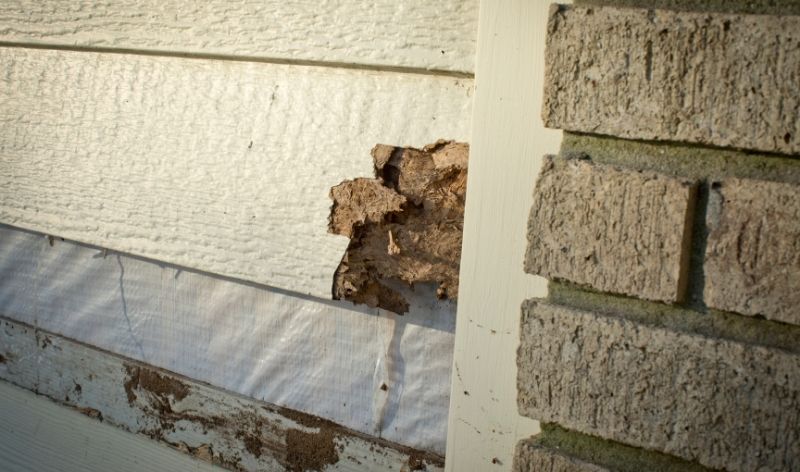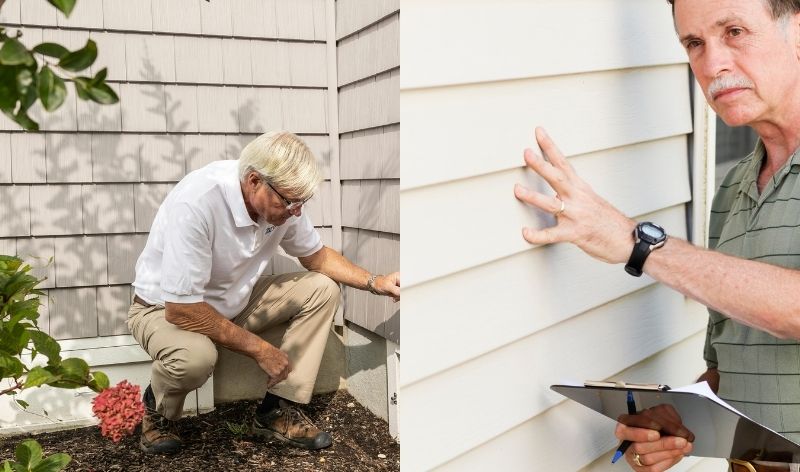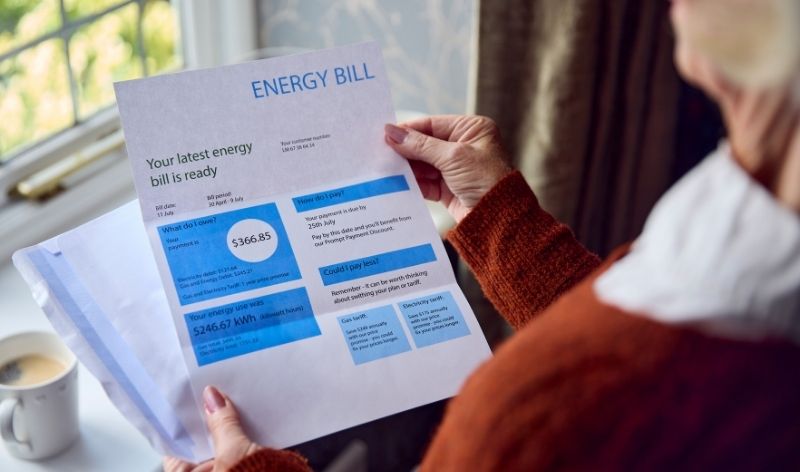Fast, Free Estimates on Roof Replacement, Installation or Repair | Call today! (732)740-6561
5 Signs of Siding Damage that Most Homeowners Ignore
New siding installation does more than give your home curb appeal. It acts as a protective barrier against wind, rain, snow, pests, and temperature extremes.

When siding becomes compromised, even in small ways, it can allow water infiltration, lead to mold growth, increase energy bills, and cause long-term structural issues. The challenge is that many types of siding damage start small and are easy to overlook. By the time the problem becomes obvious, repairs can be extensive and expensive.
To protect your home, it’s important to recognize the early warning signs. Here are five common types of siding damage that most homeowners ignore.
1. Small Cracks or Holes
Tiny cracks or pin-sized holes might seem like a cosmetic concern, but they often signal more serious issues. Moisture can seep into these openings, and once water penetrates behind siding panels, it can rot the underlying wood or sheathing.
These cracks also provide an entry point for insects such as carpenter ants or termites. Over time, what began as a barely visible flaw can turn into widespread structural damage.
Inspect siding at least twice a year, particularly after harsh storms. Look closely around areas prone to impact, such as where a lawnmower or weed trimmer may have thrown debris. Even minor cracks should not be ignored, since siding is only effective when it remains a continuous protective shell.
2. Warping or Buckling Panels

Siding should lay flat against your home’s exterior. When panels begin to warp or buckle, it is usually a sign of underlying moisture problems or improper installation. Warping may also occur when siding expands and contracts due to temperature changes but lacks the flexibility to move.
A warped panel leaves gaps where rain, snow, and humidity can sneak in. Once moisture becomes trapped, it accelerates decay and can even damage insulation. Homeowners sometimes dismiss warping as a visual imperfection, but it is often one of the first visible signs that siding has lost its integrity.
Run your hand along the surface of your siding. If you feel bulges, unevenness, or softness beneath the panel, it’s time to investigate further.
3. Fading or Discoloration
While fading paint or siding color may appear to be only an aesthetic issue, it can indicate that siding materials are reaching the end of their lifespan. UV rays, moisture exposure, and age gradually break down protective coatings. Once siding loses its protective layer, it becomes more vulnerable to water infiltration and cracking.
Discoloration can also be an early warning sign of trapped moisture. Dark streaks or blotches may mean that water is already behind the siding, potentially creating mold and mildew growth. When fading or staining is isolated to one area of the home, it often points to localized water damage, such as from clogged gutters or a roof leak.
4. Soft or Spongy Spots
One of the most overlooked indicators of siding damage is a soft or spongy feeling when siding is pressed gently. Healthy siding should feel firm and secure. If it gives way under pressure, it often means that the material beneath is rotting or has been weakened by moisture.
This type of damage is rarely visible from the outside, which is why it can be so deceptive. By the time siding feels spongy, water has usually been infiltrating for months or years.
Homeowners often ignore this sign because it does not draw attention until someone happens to touch the panel. Unfortunately, ignoring it can lead to widespread rot that compromises the structural integrity of walls.
5. Rising Energy Bills

Not all siding damage is visible. Sometimes, the first clue is an unexplained increase in heating or cooling costs. Siding plays a critical role in insulating your home and protecting it from drafts. When siding becomes loose, cracked, or waterlogged, it loses much of its insulating power.
Higher utility bills, especially when combined with drafts near walls or uneven room temperatures, can be a sign that siding is no longer functioning properly. Homeowners often blame HVAC systems for these issues, but the culprit may be deteriorating siding.
Keeping track of your energy costs and watching for seasonal spikes can help you catch hidden siding issues before they become expensive repairs.
Why Paying Attention Matters
Siding is one of your home’s first lines of defense. When small signs of damage go unaddressed, they allow water, pests, and air to penetrate the home’s envelope. Over time, this can compromise not just the siding itself, but also framing, insulation, and even indoor air quality.
By performing regular inspections and paying attention to these subtle signs, homeowners can extend the life of their siding and protect the investment in their property. If you notice any of these issues, it’s important to act quickly. The earlier siding damage is identified and corrected, the more likely it is that repairs will be simple and cost-effective.
Get Premium Siding for Your Central Jersey Home
Siding damage often starts small, but the consequences of ignoring it can be major. Cracks, warping, fading, spongy spots, and unexplained energy costs all point to siding that needs closer inspection. Many homeowners dismiss these signals until the damage becomes impossible to ignore, at which point repairs may be extensive.
Being proactive in identifying siding problems helps protect your home from moisture, pests, and unnecessary energy loss. A careful eye today can prevent costly issues tomorrow.
If you are uncertain about the condition of your siding or want to replace your current siding, contact us today at 4 Seasons Roofing Company. Serving Middlesex, Monmouth, and Ocean Counties, we offer the finest materials with quick service, fair pricing, and quality workmanship we stand behind.
